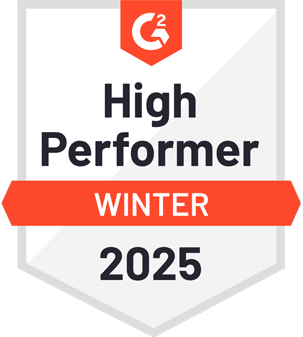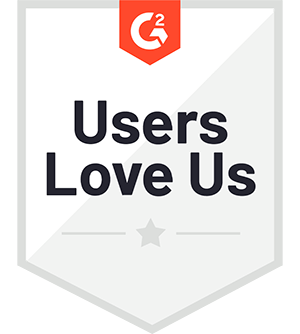ポイント
- Operational data quickly loses value in dynamic environments; rapid analysis is critical to transform raw feeds into timely intelligence.
- Analysts spend more time filtering what to analyse than performing analysis. Data science and AI can free humans to focus on judgement and strategy.
- Structured and unstructured defence data — from SIGINT to OSINT — must be securely integrated to create a coherent and actionable Common Operating Picture.
- With advanced tools like time-series databases, edge computing, and machine learning, Defence can move from slow processing to real-time, multidimensional insight.
- The UK Defence sector already has sensors, platforms, and people in place, but must adopt a data-first culture that prioritises reuse, integration, and innovation to realise true strategic advantage.
In the context of fast-moving, integrated operations, data can have a very short half-life; the clock begins ticking as soon as sensors collect it. The pace of analysis is critical. If it takes twelve hours to analyse information that’s needed to address a fluid, fast-moving, five-minute event, it becomes outdated and irrelevant.
This, of course, puts enormous pressure on analysts who potentially have mere minutes to spend on interpretation, having already sunk hours into identifying which images to analyse. It also leaves them more prone to missing details and patterns that a machine would spot in seconds.
Faced with a wall of screens and a torrent of feeds, analysts at the Combined Air Operations Centre (CAOC) may spend far more time working out which data to analyse than they do on the analysis itself.
When it comes to data fusion, correlation, and contextualisation, analysts and the decision makers they serve, have to make sense of the most relevant, most reliable images, seating these within their wider understanding. This is buffeted by different data types, sources, and formats: structured data, which is organised and easily searchable, and unstructured data, which includes images, video, audio, and social media feeds that lack a predefined format. These arrive at different levels of classification and relate to different aspects of the battlespace — from mobile assets, to radar, to the weather, to Signals Intelligence (SIGINT) and Open-Source Intelligence (OSINT). This makes it difficult to combine, compare, or analyse information without breaching classification boundaries or introducing additional complexity.
What results is potentially a daunting, fragmented, unfocused, outdated Common Operating Picture that falls short of its promise; one that serves up information overload rather than useful synthesis and actionable insight. Like their analysts, decision makers become tight-jawed and mentally taxed, having to interpret this low-resolution picture. They’re acutely aware that they could and should be applying their judgement and intuition to making swift, well-informed decisions.
From mission planning to the CAOC big screen, this is the most advanced military data collection and exploitation process that has ever existed. Yet, when held up against the tools and technologies used daily in the private sector, it feels decidedly outdated and wildly inefficient.
Data science: the bridge between data and decision making
When you apply data science to start addressing these inefficiencies — when you stop sending humans to do a machine’s job — you’re not just able to do the same things differently. You’re able to do entirely different things.
It starts with the fundamentals: secure, structured, and intelligently catalogued data storage. From there, being able to sort and process data at source (rather than transferring between systems and classification levels) cuts costs, risk, complexity, and time. Finally, assured access to the right information from anywhere becomes not just a convenience but a force multiplier.
If Defence can adopt commercially proven analytical tools and techniques, from time-series and vector databases to edge computing and machine learning, it’s no longer limited to passive collection and slow processing. Analysts and decision makers can interrogate data in real time and in multiple dimensions.
That means faster decisions when speed is paramount, where the journey from input to action is condensed and accelerated. But it also means richer insights, the kind that:
- Reveal patterns a human might miss
- Allow different people, across functions and seniority, to ask different questions
- Create the conditions to answer tomorrow’s questions, even the ones we don’t yet know we’ll need to ask
At its heart, technological transformation is a fundamentally human endeavour
The challenge is bold, unambiguous, and unflinching: by the end of the decade, the British Army must be three times more lethal. This does not mean, nor was General Walker suggesting, that the Army must be three times the size it is now. Instead, we must force-multiply the output of every single operator so one delivers the effect of three. In today’s fluid, fast-moving operating environment, the ability to be effective as efficiently as possible is key.
With the right data infrastructure, the right tools and technologies, we can unlock more of this potential efficiency. Fighters can fight harder. Analysts can analyse faster. Planners can plan more frequently and more precisely. Decision makers can focus on bringing their judgment to bear.
The good news is that, in terms of sensors, platforms, and people, the Ministry of Defence has already made many of the necessary investments. But to extract more value, and more impact, from those investments, Defence must adapt culturally as well as technologically.
Data infrastructure remains fragmented, and reuse is hampered by siloed systems and platform-first thinking. It’s understandable: operators can kick a fast jet’s tyres, send it to the front line for battle testing, and judge the speed and magnitude of its impact more easily than they can assess the information technologies that make these platforms so valuable.
There are good reasons to believe, however, that Defence is increasingly understanding these challenges, and the potential of alternative approaches to solving them. The reported change to the British Army’s operational doctrine, which puts greater emphasis on reusable autonomous systems, will require time, effort, and investment into the information layer to make sure such systems are networked effectively.
This is indicative of the sort of change required to deliver the enduring advantage that Front Line Commands need if they’re to fight and win. Otherwise, without an information-first mindset and data-centric systems that prioritise reuse and integration, Defence will keep paying in time, money, and risk for knowledge it should already have.
Without an intentional, well-funded, considered approach to treating data as a strategic asset in its own right, on a par with platforms, commanders will continue to extract only a fraction of its potentially war-winning value.
The tools already exist. The will and intent are there. If the UK’s 2025 Strategic Defence Review is to achieve its aims — and if ‘heavy metal’ platforms are to be complemented by networked drones, integrated AI, and autonomous systems — what’s needed is a culture that’s willing to embrace complexity, encourage experimentation, and rewire how Defence thinks about data.
Drive unmatched operational intelligence with fast and secure analytics that powers deeper insight, intelligent hindsight, and greater foresight. Learn more about KX Aerospace & Defence.







